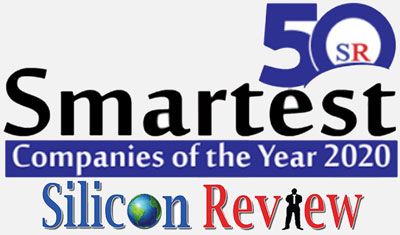Our Blogs – For CIOs by CIOs
 Silicon Review’s interview with Jeff Richards, Managing Partner
Silicon Review’s interview with Jeff Richards, Managing Partner
Information technology is now a critical function in any organization. In fact, even companies that do not consider themselves to be “high-tech” are investing in new technologies for digital transformation. To ensure they are tapping the right opportunities, many engage strategic IT consultants to facilitate the development and implementation of an integrated IT strategy.
Founded in 2009, Palo Alto, California-based CIO Professional Services is an IT strategy consulting firm that helps mid-size organizations address a wide range of IT alignment and strategy issues. Over the years Jeff Richards, the firm’s co-founder and Managing Partner, has seen that there are two axioms that explain the problems many of their clients face: In IT the demand for services will always exceed the supply, and If you don’t know where you’re going, you’ll never arrive.
 By David Haedtler, Principal
By David Haedtler, Principal
When the pandemic first hit, your company, like most companies, may have been blindsided. Sure, you had what you thought were robust Disaster Recovery and Business Continuity Plans. But the assumption was that if your facility was no longer usable, you’d simply get your people set up in a different facility. No one ever imagined that practically overnight you’d have to transition to an all-remote or nearly-all-remote distributed workforce.
But somehow you did it. And now, many months later, work from home (WFH) has not gone away. In fact, it’s likely here to stay in one form or another for quite some time.
 By Stephen McGrady
By Stephen McGrady
Principal
A few months ago I, like most people, commuted to work each day. That commute created a clear demarcation between my “workday” and my “time at home.” Sure, I sometimes took a call in the evening, and I was as addicted to my Gmail/Slack/Zoom/WebEx/Teams feed as the next person. But when I was at the office I was mentally and physically “at work,” and when I was at home, I experienced work as an interruption in my home life.
That all went out the window when the lockdowns began.
 When the COVID-19 pandemic first hit, many businesses scrambled to quickly make the switch to having and supporting a work from home (WFH) workforce. Now, after months of managing this, most organizations fall into one of two categories:
When the COVID-19 pandemic first hit, many businesses scrambled to quickly make the switch to having and supporting a work from home (WFH) workforce. Now, after months of managing this, most organizations fall into one of two categories:
- They’re still struggling to get it right
- They think they have everything dialed in—and are blissfully unaware of the problems that are lurking and festering out of view
Whichever category your organization falls into, CIO Professional Services’ Remote Working Assessment can help ensure that all aspects of your WFH program are working as well as possible.
WFH is all about people, processes and technology
As you have no doubt discovered, there’s a lot more to having a WFH workforce than simply sending everyone home and telling them to “carry on as usual” from a different locale.
For example, just looking at top-level issues… Working from home makes collaboration more difficult and can cause morale to plummet (especially if your “fun workplace” used to be a big draw). Processes that worked well in the office may need to be completely revamped for a distributed workforce. Technology can create serious security risks.
Once you dive below the surface, even more questions arise. For example:
- Are your managers doing a good job enabling and supporting your WFH workforce?
- How has WFH impacted cross-team initiatives?
- What is the long-term impact on your office space needs?
- What’s the best way to provide secure networking for thousands of unique endpoints directly to the cloud without VPN?
- How do you provide high-quality technology support?
- Do your WFH folks need periodic access to your facilities? If so, how often? For what? How will this impact security issues, pandemic-related safety issues, etc.?
- Looking ahead, what is the “new normal” likely to be—and what do you need to do to get there?
And the list goes on.
Our Remote Working Assessment can make a significant difference
CIO Professional Services’ Remote Working Assessment gives you a complete 360° look at where you’re at today, plus a roadmap for getting to a better place.
If you’re struggling to get things right, this assessment will help pinpoint the problems and give you solutions. If you think things are just fine as is, this assessment may open your eyes to issues your internal surveys did not uncover (because, as it turns out, employees are hesitant to mention problems when their boss asks “how’s WFH going for you?”).
The Remote Working Assessment goes deep to get candid, honest answers regarding how everyone really feels about WFH. What issues and challenges are they finding most vexing? What positives are they discovering? How is WFH impacting them personally? How do they see it impacting their department and the company as a whole?
Assessment components include:
- Kickoff session with executive/senior managers, using a facilitated virtual group discussion methodology.
- Overall review of your organization’s policies, documents and communications regarding WFH.
- Management surveys to learn about company policies, culture and attitudes regarding remote workers. This survey includes both quantitative analysis and open-ended questions, all asked through a unique anonymous online brainstorming tool that allows participants to reflect on and respond to, the ideas presented by others.
- Employee surveys using the same online brainstorming tool. The survey for WFH employees focuses on understanding the people, process and technology issues and concerns of workers who are working from home. If some of your workers are not working from home, they can also be surveyed to gain perspective on the challenges they face in this hybrid environment.
- Facilitated discussions with smaller groups of managers and remote employees to further explore issues raised in the surveys and gather additional ideas and opinions.
- Analysis of assessment input to pinpoint problem areas, highlight successes and assess your existing capabilities and situation against leading industry practices.
- Multiple Deliverables based on all of the above. You’ll get a Summary Report of the assessment results that can be distributed to all survey participants. A comprehensive Management Report and detailed analysis of assessment findings will be presented to your executive team, along with a set of proposed actions for improving the WFH environment, organized by “quick win,” near-term and long-term initiatives.
The end result: You’ll have a clear understanding of the current state of your WFH infrastructure, culture, policies and impact. And you’ll have the information and plans you need to ensure that work from home is truly working for your organization.
Get started now
To schedule a time to discuss your organization's needs,
 By Stephen McGrady
By Stephen McGrady
Principal
Last year if a customer sent you a Business Continuity Plan questionnaire asking what your plans were for responding to a pandemic, your response might have been, “Why are we even being asked about this? What difference does it make?” Your disaster planning was most likely focused on events that appeared to have a reasonable probability of taking place: earthquakes, fires, floods, key suppliers going out of business, labor strikes, etc.
This year, however, the outbreak of the coronavirus known as COVID-19 has changed all this. Between wide-spread quarantines and shut-downs in China, supply chain disruptions, trade show cancellations, stock market swoons and panicked calls from your elderly parents, it’s painfully obvious that you also need to have a plan for addressing pandemics.
As of this writing the outbreak of COVID-19 is far from contained. How might it impact your business?
 By Naidu Annamaneni
By Naidu Annamaneni
Associate
We often hear clients and colleagues say things like, “We’d love to move our IT to the cloud, but for security reasons we’re keeping everything on prem.”
Or “Sure, the benefits of being a cloud-first organization sound great…but what about security? With all of the data leaks and hacking going on, our Board just won’t consider making the move.”
Sound familiar? When I first started looking at moving eSilicon’s High-Performance Computing chip design workloads to the cloud, I faced similar objections. At the time I was eSilicon’s CIO and Vice President of Global IT, and our Board’s two major concerns were cost and security.
 By David Philippou
By David Philippou
Associate
Day after day your IT team keeps the systems running. Everything is secure. There are no outages. Tickets get addressed promptly. The entire system operates exactly as it should, every day.
While you think your group should be up for “Department of the Year,” the rest of the company hasn’t even noticed your good work. Why? Because these things are all expected. As far as they’re concerned, you’re just “keeping the lights on.” And who ever notices that?
 By Naidu Annamaneni
By Naidu Annamaneni
Associate
In 2017 eSilicon, a semiconductor design and manufacturer specializing in making chips tailored to its customer’s specific requirements, faced an enormous challenge. The company was being held back by the inherent limitations of the “datacenter as a service” solution that it had been using to run its High-Performance Computing (HPC) chip design workloads. However, the public cloud providers had not yet addressed the many technical challenges of doing this work—which included thousands of cores and peta bytes of storage—in the cloud.
As eSilicon’s CIO and Vice President of Global IT at the time, I led the team that partnered with Google and several other companies to address this challenge and become the first semiconductor maker to do end-to-end design in the cloud. Along the way I learned quite a bit about how to successfully and cost-effectively run HPC in the cloud.
 By David Philippou
By David Philippou
Associate
Years ago I was at a company leadership development day. When we got to the touchy-feely part at the end where everyone is asked to thank someone else in the room, I did so and then…nothing. While everyone else got thanked for the smallest of things, I sat there thinking, “Hey! What about me? My team and I have worked tirelessly to ensure the IT systems work, day in and day out, and tickets no longer disappear into a black hole. Don’t I deserve some thanks, too?”
Evidently not.
Got An Idea? Lets Make It
Happen Today
Just Wanna Chat ? Just let Us Know When


